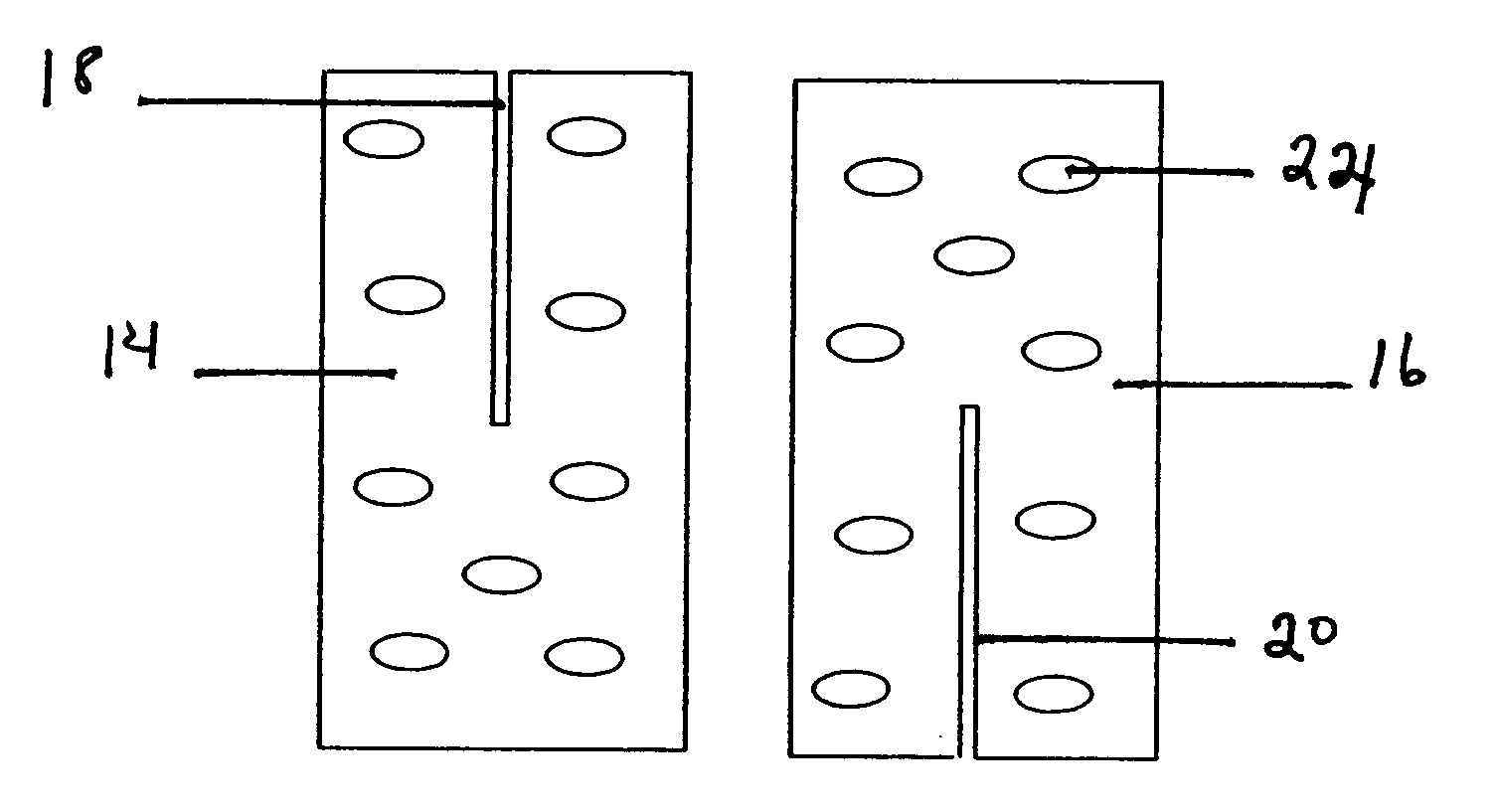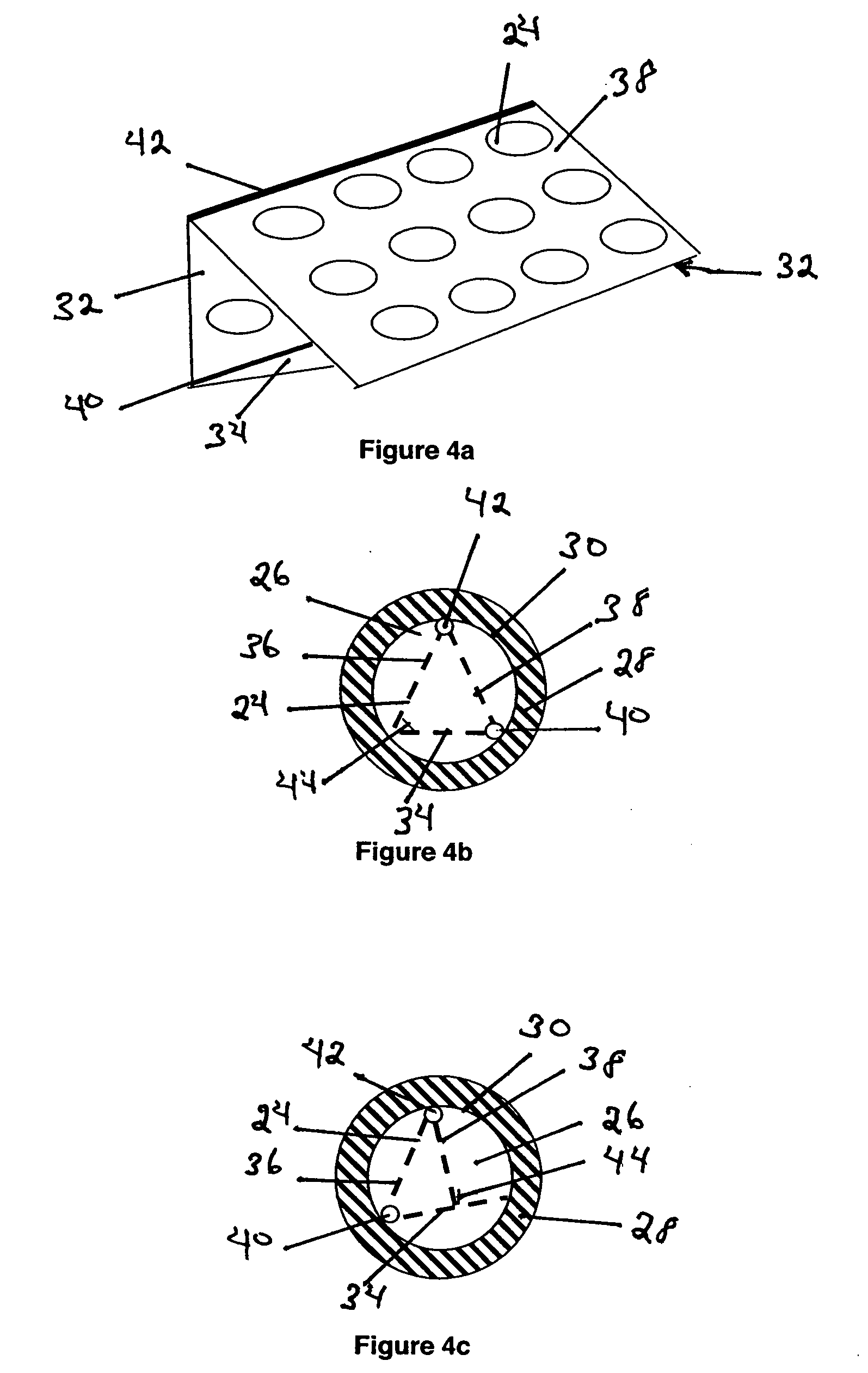Bone implant device and methods of using same
a bone implant and implant technology, applied in the field of bone implant devices, can solve the problems of device which is unable to perform the intended function, inability to achieve the intended function, and inability to suppress the very bone formation needed, so as to prevent suppression or reduction of bone growth, minimize contact, and minimize the effect of conta
- Summary
- Abstract
- Description
- Claims
- Application Information
AI Technical Summary
Benefits of technology
Problems solved by technology
Method used
Image
Examples
Embodiment Construction
[0035] In one embodiment the invention is directed to a bone implant device comprising two or more interconnected plate members. At least one plate member defines a plurality of apertures adapted to permit bone growth through the aperture from an interior portion of a bone in which the device is implanted. The number and arrangement of these apertures is an important consideration in fabricating the plate members of the invention and the appropriate choices involving these parameters can be readily made by those having ordinary skill in this art. Bone growth through the apertures aids in securing the device within the bone marrow cavity. The device is configured and adapted to minimize contact with the interior portion of the bone to aid in preventing suppression or reduction of bone growth by osteoblasts located within the marrow cavity and / or along the inner bone surface. As used herein, the phrase minimize (or minimal) contact is defined to mean that no more than 75% of the bone'...
PUM
 Login to View More
Login to View More Abstract
Description
Claims
Application Information
 Login to View More
Login to View More - R&D
- Intellectual Property
- Life Sciences
- Materials
- Tech Scout
- Unparalleled Data Quality
- Higher Quality Content
- 60% Fewer Hallucinations
Browse by: Latest US Patents, China's latest patents, Technical Efficacy Thesaurus, Application Domain, Technology Topic, Popular Technical Reports.
© 2025 PatSnap. All rights reserved.Legal|Privacy policy|Modern Slavery Act Transparency Statement|Sitemap|About US| Contact US: help@patsnap.com



